1985 Pillai,
mathematician
1976 Fourteen die as Teton Dam in Idaho bursts
causing $1 billion in damage.
1970 José Antonio Montalvo Berbeo,
político colombiano.
1940 Love,
mathematician
1922 George
W. Carmack, discoverer of Klondike gold.
^top^
George W. Carmack, the first person to discover gold along the Klondike
River, dies in Vancouver, British Columbia. Carmack was born into
a life of prospecting and mining. His father was a forty-niner who
settled his family in Contra Costa County, California. When he was
in his early 20s, Carmack followed his father's example, setting off
on long prospecting journeys that took him from Juneau, Alaska, to
the Yukon Territory of northwest Canada. There, he married a woman
from the Tagish, a small tribe of Native Americans from the southern
Yukon. Unlike many prospectors, Carmack was not consumed by the lust
to find gold. For several years, he was happy to wander about the
Yukon with his wife's people. When he did settle down in a cabin on
the upper Yukon River, he enjoyed performing on an organ, reading
periodicals like Scientific American, and occasionally writing sentimental
poetry.
In the summer of 1896,
Carmack was fishing for salmon near the confluence of the Yukon and
Klondike River. Accompanied by two Tagish friends, Carmack decided
to explore Rabbit Creek, a tributary of the Klondike. As he did habitually,
Carmack stopped occasionally to pan for signs of gold along the creek.
At first, he found little of the telltale yellowish color in his pan.
Then, on August 17, he stumbled across a deposit of gold so rich that
he needed no pan to see it: Thumb-sized pieces of gold lay scattered
about the creek bed. Carmack's two Tagish companions later said they
had actually found the gold while Carmack was asleep under a birch
tree.
Regardless of who deserved
the credit, the discovery sparked one of the last great western gold
rushes. Thousands of would-be miners raced for the Klondike the following
year. Partly because there was no other big news at the time, American
newspapers exaggerated the reports of the gold fields in the Klondike.
Steamship and outfitting companies did their part to promote the rush
as well. Historians estimate that as many as 100,000 people set out
for the Yukon gold fields, though perhaps only half that number actually
reached the diggings. Unlike Carmack, few of the gold seekers were
experienced in prospecting or mining, and many were turned back by
sickness, starvation, and the bitter northern cold. Carmack was luckier.
After making several valuable claims, he abandoned his wandering life
with the Tagish and set to work mining gold. According to some reports,
when he returned to the United States in 1898 he had found gold worth
more than a million dollars. Now a wealthy and influential man, Carmack
moved to Vancouver, B.C., where he married the daughter of a successful
mining operator. No mention was made of his earlier Tagish wife--Carmack
may have simply abandoned her. He died in Vancouver in 1922 at the
age of 61. |
1921 Georges Feydeau, comediógrafo francés.
1920
Nicolas Alexandrovitch Tarkhoff, Russian artist who died on 20
January 1871.
1915 Henri Gaundier~Brzeska, French
artist born on 04 October 1891
1916 Horatio H Kitchener,
65, British General (Sudan)
1887 Hans von Marées,
German artist born on 24 December 1837. — LINKS
1886 Antonio Varas de la Barra, político y abogado chileno.
1880 Karl Friedrich Lessing, German artist born on 15 February
1808.
1870 Unas 1200 personas en un incendio en
Estambul, 60'000 personas quedan sin hogar.
1864 Gen William
E "Grumble" Jones killed at Piedmont
1864
Hundreds of Yanks and Rebs at Battle of Piedmont.
^top^
At Piedmont, Viriginia, Union forces under General David Hunter rout
a Confederate force led by General William "Grumble" Jones, giving
the North their first real success in the 1864 Shenandoah campaign.
As part of his attempt to knock out the Confederates in Virginia,
Union General Ulysses S. Grant sent Franz Sigel to neutralize Rebel
forces in the Shenandoah Valley in western Virginia. But Sigel did
little to assist Grant, instead presiding over a Union defeat at New
Market on 15 May. Hunter, who replaced Sigel, quickly moved toward
the rail center at Staunton with some 11'000 soldiers and another
5000 cavalry troopers. Resisting him were about 5600 soldiers under
the command of Jones and John D. Imboden, cobbled together from various
Confederate units scattered about western Virginia. As the Union force
marched south to Staunton, Imboden moved his part of the army to block
the Yankees. They met north of Piedmont, where Hunter attacked on
the morning of 05 June and forced Imboden to retreat. After being
reinforced by Jones at Piedmont, the Confederates spread out to stop
the Federals but left a small gap in their lines that later proved
fatal. The Union troops pressed through the gap, and Jones was killed
while leading an attempt to drive the Yankees back. The Confederate
line was broken, and the Southerners retreated. Six hundred soldiers
were killed or wounded, and another 1000 were captured; the Yankees
lost 800. Rebel opposition evaporated, and Hunter entered Staunton
the next day. The victory cleared the way for Union occupation of
the upper Shenandoah Valley. |
1854 Jenaro Pérez Villaamil, Spanish artist born
on 03 February 1807.
1833 José María Castillo y Rada,
abogado y político colombiano.
1826 Karl María Von Weber,
compositor y pianista alemán.
Condamnés
à mort par la Révolution: ^top^
1794 (17 prairial an II):
BOULART Charles Joseph, 30 ans, né à St Omer, célibataire,
musicien, guillotiné à Arras.
LEFEBVRE Alexandre,
38 ans, né à Hermaville, cultivateur à Monchy le Preux, guillotiné
à Arras.
Comme brigands de la
Vendée, par la commission révolutionnaire de Mayenne:
LAINE René, laboureur. domicilié à St Germain-le-Filoux
(Mayenne et Loire)
...
domiciliés dans le département de la Mayenne:
BEAUJEAN Jean, laboureur, domicilié à la Brulatté,
canton de Laval. — BOUVET Michel, aîné, domicilié
à Changé, canton de Laval. — COULON Julien,
laboureur, domicilié à Laval. — COULON Julien,
laboureur, domicilié à Laval. — MARTEAU François,
tisserand, domicilié à Laval. — SEGRETAIN Jacques,
domicilié à St Ouen-Destoir. — SORIN Etienne
(dit Lalande), tisserand, domicilié à Poiron.
Comme
traîtres à la Patrie, par le tribunal révolutionnaire
séant à Cambray (Nord):
BARALLE
Marie Josephine Nedochel, ex noble, religieuse — BOULANGER
Augustin, écrivain, domicilié à Cambray — CARPENTIER
Jacques, père, cultivateur — CARPENTIER Amand,
fils, cultivateur — DELECOLE Jean Charles,
journalier — PEUGNIEZ Pierre Joseph, ex cordelier,
domicilié à Cambray
Par le tribunal
révolutionnaire de Paris:
MEZERAI
Paul, employé aux domaines nationaux, 45 ans, né à Montargis
(Loiret), domicilié à Paris, comme complice d'un complot formé dans
la maison d'arrêt du Port-Libre où il était détenu, pour exciter à
l'insurrection.
VILLENEUVE Louis Henri, (dit
Trans), colonel du ci-devant régiment de Roussillon, 59 ans, natif
de Marseille, département de la Seine [sic], comme convaincu
d'avoir conçu un projet de soulèvement de la part des détenus avec
lui dans la maison d'arrêt de Pont-Libre.
PERRIER Marie
Madeleine, veuve Fonsenay, 57 ans, native de Villiers (Orne),
ex noble, domiciliée à Vincennes (Seine), comme conspiratrice, ayant
dit, en parlant des despotes coalisés; voilà donc les nôtres qui s'avancent
à force, et dans quinze jours il n'y aura plus de république.
DEGUE J., 32 ans, né à Passy (Mont Blanc), frotteur,
domicilié à Paris, comme convaincu d’être complice d’un complot contre
le peuple français tendant au rétablissement de la royauté.
... comme
conspirateurs:
GUILLER Elisabeth Thérèse,
(dit Denouac), ex noble, 45 ans, née à Châteauneuf-en-Thimerais (Eure
et Loire), domiciliée à Bourg-de-l'Egalité (Seine) [ci-devant
Bourg-la-Reine?]
MERAUD Jean Antoine,
60 ans, né à Neclure (Puy-de-Dôme), ex curé constitutionnel de la
Meilleraye, domicilié à Mailleraye (Sarthe)
ARMAND Louis,
garde-chasse du ci-devant duc Montemart, et vigneron, domicilié à
Paris.
1793:
ROQUILLE
Joseph Dominique, (dit Lieutaud), homme de lettres, domicilié
à Paris, comme missionnaire de faux assignats, par le tribunal criminel
du département.de la Seine.
Comme
fabricateurs de faux assignats:
BREMONT
Amand Jules, entrepreneur des coches-d'eau, domicilié à Champigny,
canton de Melun (Seine et Marne), par le tribunal criminel dudit département.
JUILLET Amédée A. L., ancien capitaine de cavalerie,
domicilié à Paris
MEAUX Charles Laurent (dit
St Marc), négociant, domicilié à Paris, par le tribunal criminel du
département de la Seine.
RICHEMONT Pierre Théodore
(dit Villote), homme de loi, domicilié à St Mandé (Seine), par le
tribunal criminel dudit département. |
1781 Noël Hallé, French artist born on 02 September
1711.
1716 Roger
Cotes, mathematician.
1568 Willem Key,
Flemish artist born in the period 1515-1520.
--221 -BC- Chu
Yuan China's poet drowns |
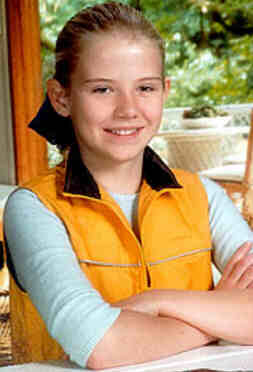
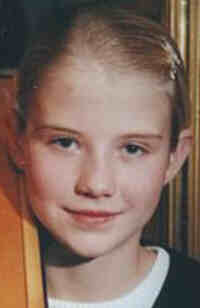 On
an 05 June:
On
an 05 June:

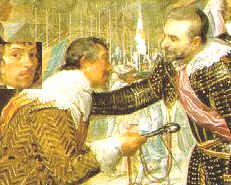
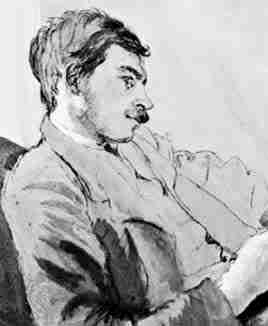 1883
1883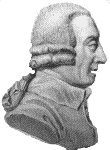 Known primarily for a single work, The Wealth of Nations
(1776), the first comprehensive system of political economy,
Known primarily for a single work, The Wealth of Nations
(1776), the first comprehensive system of political economy,